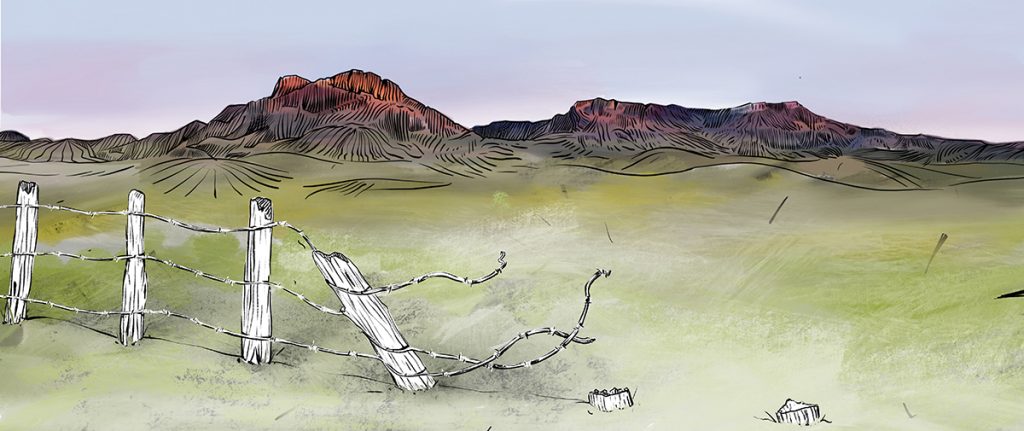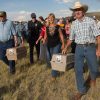Why the Sagebrush Rebellion didn’t end with Malheur
“The Court excludes Dr. Cawley’s testimony as irrelevant and finds, in any event, that its probative value is significantly outweighed by the risk of confusing the issues, misleading the jury, and wasting time.” Here’s the backstory.

In January 2016, a group of disgruntled federal-land users and militia activists occupied the Malheur Wildlife Refuge in Oregon as a way to challenge the authority of the federal government. After a more than month-long standoff, the occupiers surrendered to federal authorities. In June 2016, I was contacted by the court-appointed lawyer for one of the occupiers about the possibility of serving as an expert witness for the defense.
A central question in the trial was whether the occupation represented a criminal act (the government’s position) or a political protest (the defendants’ position). I was contacted because 25 years ago, I published a book on a federal-land controversy dubbed the “Sagebrush Rebellion.” The expressed goal of the movement was to get federal lands—primarily those managed by the Bureau of Land Management—transferred to the western states. A central contention of my book, however, was that the call for land transfer was a red herring. It was actually a vehicle for ranchers and other users to articulate their belief that they were being excluded from the federal land-use decision process. In my view, then, the Sagebrush Rebellion was in fact a political protest.
I agreed to provide testimony that would situate the occupation against the background of the Sagebrush Rebellion and federal-land political disputes more generally. But first I would have to pass an audition (“Daubert hearing” in legal jargon) with the trial judge. As the judge’s response above indicates, I failed the audition. Interestingly enough, the jury subsequently acquitted the defendants on grounds along the lines of the testimony I would have given.
An interesting consequence of being identified as an expert about the Sagebrush Rebellion has been a stream of interviews with journalists over the years. Every time some federal-land conflict emerges, my phone starts ringing as journalists want to know if I view the said incident as the “new Sagebrush Rebellion.” Many of the journalists are rather disappointed with my explanation that these controversies are not “new Sagebrush Rebellions” but rather a continuation of the original movement.
At the time my book was published the dominant view was that the Sagebrush Rebellion ended when the movement failed to transfer public lands to the states. I saw a different possibility. While the Sagebrush Rebellion as a more or less formal movement might have ended, the issues raised by it were far from being settled. Herein is an important lesson about political controversies in our governing system. They seldom have definitive end points because the “losers” in an argument at one point in time are usually not executed or exiled. As long as people believe they have valid complaints, they will continue to press their issues. This lesson certainly applies to federal-land controversies.
What we now call “Sagebrush Rebels” are people who have been pursuing a more or less consistent political agenda since at least the 1950s. One of their key issues is opposition to management that emphasizes preservation over development goals. Another, and equally important, issue is a desire for more state or local government authority in the federal-land management decision process. Since neither of these issues can be resolved once and for all, they are best understood as venues for ongoing arguments. Indeed, the passage of the Federal Land Management and Policy Act in 1976 was portrayed as defining a compromise that would resolve federal-land policy disputes. Yet, roughly three years later the Sagebrush Rebellion spread across the western states.
This brings us back to my brief adventure in the Malheur occupation trial. My comments here are essentially a truncated version of the testimony I presented before the judge. Although her comment may seem harsh, I don’t really disagree with her assessment. In my 30-plus years studying and writing about political controversies, I have yet to find one that doesn’t have confusing and misleading aspects if taken seriously. My view of these matters might be “irrelevant” from a strictly legal perspective, but it captures the essence of politics as it plays out in the real world.
Many federal-land observers contend that the acquittal of the occupiers was a travesty of justice. Maybe so, but I propose another view. On the one hand, it was a curiously positive development. Not because it means the occupiers’ position was vindicated, but rather because it makes it more difficult for them to sustain an image of being “victims” of a heavy-handed government. As such, it makes more protests less likely, at least for the time being. On the other hand, it didn’t resolve any of the issues that led the people to occupy the refuge. So, I remain committed to the position I presented in my book 25 years ago: the movement may have ended, but the Sagebrush Rebels are still very much alive and can be expected to continue pursuing their agenda.
Perspective from R. McGreggor Cawley, illustration by Yeshe Parks
McGreggor Cawley is a professor of political science at the University of Wyoming, and author of Federal Land, Western Anger: The Sagebrush Rebellion and Environmental Politics.


